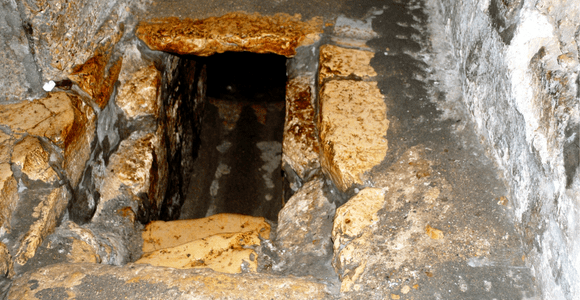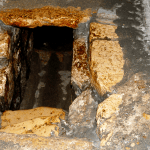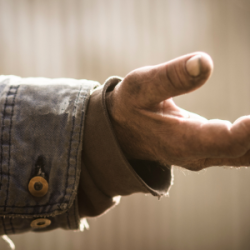
This week, we are looking at the story of Lazarus, and our reading is from the gospel of John:
Now a man named Lazarus was sick. He was from Bethany, the village of Mary and her sister Martha. (This Mary, whose brother Lazarus now lay sick, was the same one who poured perfume on the Rabbi and wiped his feet with her hair.) So the sisters sent word to Jesus, “Rabbi, the one you love is sick.”
Welcome Readers! Please subscribe to Social Jesus Here.
When he heard this, Jesus said, “This sickness will not end in death. No, it is for God’s glory so that God’s Son may be glorified through it.” Now Jesus loved Martha and her sister and Lazarus. So when he heard that Lazarus was sick, he stayed where he was two more days, and then he said to his disciples, “Let us go back to Judea.”
“But Rabbi,” they said, “a short while ago the Jewish elites there tried to stone you, and yet you are going back?”
Jesus answered, “Are there not twelve hours of daylight? Anyone who walks in the daytime will not stumble, for they see by this world’s light. It is when a person walks at night that they stumble, for they have no light.”
After he had said this, he went on to tell them, “Our friend Lazarus has fallen asleep; but I am going there to wake him up.” His disciples replied, “Rabbi, if he sleeps, he will get better.” Jesus had been speaking of his death, but his disciples thought he meant natural sleep. So then he told them plainly, “Lazarus is dead, and for your sake I am glad I was not there, so that you may believe. But let us go to him.”
Then Thomas (also known as Didymus) said to the rest of the disciples, “Let us also go, that we may die with him.”
On his arrival, Jesus found that Lazarus had already been in the tomb for four days. Now Bethany was less than two miles from Jerusalem, and many people of the Jewish community had come to Martha and Mary to comfort them in the loss of their brother. When Martha heard that Jesus was coming, she went out to meet him, but Mary stayed at home.
“Rabbi,” Martha said to Jesus, “if you had been here, my brother would not have died. But I know that even now God will give you whatever you ask.” Jesus said to her, “Your brother will rise again.” Martha answered, “I know he will rise again in the resurrection at the last day.” Jesus said to her, “I am the resurrection and the life. The one who believes in me will live, even though they die; and whoever lives by believing in me will never die. Do you believe this?”
“Yes, Rabbi,” she replied, “I believe that you are the Messiah, the Son of God, who is to come into the world.” After she had said this, she went back and called her sister Mary aside. “The Teacher is here,” she said, “and is asking for you.” When Mary heard this, she got up quickly and went to him. Now Jesus had not yet entered the village, but was still at the place where Martha had met him. When the Jewish community who had been with Mary in the house, comforting her, noticed how quickly she got up and went out, they followed her, supposing she was going to the tomb to mourn there.
When Mary reached the place where Jesus was and saw him, she fell at his feet and said, “Rabbi, if you had been here, my brother would never have died.” When Jesus saw her weeping, and the Jewish community who had come along with her also weeping, he was deeply moved in spirit and troubled. “Where have you laid him?” he asked. “Come and see, Rabbi,” they replied.
Jesus wept.
Then the Jewish community said, “See how he loved him!”
But some of them said, “Could not he who opened the eyes of the blind man have kept this man from dying?” Jesus, once more deeply moved, came to the tomb. It was a cave with a stone laid across the entrance. “Take away the stone,” he said. “But, Rabbi,” said Martha, the sister of the dead man, “by this time there is a bad odor, for he has been there four days.”
Then Jesus said, “Did I not tell you that if you believe, you will see the glory of God?” So they took away the stone. Then Jesus looked up and said, “Father, I thank you that you have heard me. I knew that you always hear me, but I said this for the benefit of the people standing here, that they may believe that you sent me.” When he had said this, Jesus called in a loud voice, “Lazarus, come out!” The dead man came out, his hands and feet wrapped with strips of linen, and a cloth around his face. Jesus said to them, “Take off the grave clothes and let him go.”
Therefore many of the Jewish community who had come to visit Mary, and had seen what Jesus did, believed in him. (John 11:1-45, Most portions taken from the Holy Bible, New International Version®, NIV®. Copyright © 1973, 1978, 1984, 2011 by Biblica, Inc.™ Used by permission of Zondervan.)
The gospel of John is the pre-Gnostic, Johannine version of the Jesus story. It’s the last gospel in our scriptural canon to have been written, and it is strikingly different than all the other versions of the Jesus story in our sacred text.
One the biggest differences in John is why Jesus was arrested and executed. In the synoptic gospels his social justice protest and Temple demonstration strikes at the heart of the Temple State in Jerusalem. But in John’s gospel, this week’s story is the cause of Jesus’ arrest and execution. Here, unlike in the other gospels, it’s not Jesus’ protest against economic injustice that gets him executed, but that the people come too close to the knowledge (gnosis) he has to offer that stops death being the last word: “So from that day on, they plotted to take his life” (John 11:53).
I have a hunch that the oldest versions of this story had a more Jewish apocalyptic flavor. We’ll unpack why, and why it’s relevant, next.
(Read Part 2)














